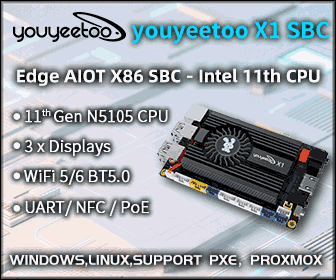How to Use Your Old Laptop Screen with Raspberry Pi or Your Computer
After reading an article on Liliputing about using Raspberry Pi Zero with Motorola Lapdock, I decided to look for clones for the device since Motorola Lapdock is now hard to buy at a decent price, if at all, since the product has been discontinued for a while. I did not find anything similar, but instead I came across M.NT68676.2A LCD driver HDMI kit selling for $37.99 on eBay that allows you to re-use your old laptop screen with any development board or computer that comes with HDMI, DVI, or VGA output. The kit is comprised of a monitor control board (M.NT68676.2A), an “inverter” board which depends on your LCD panel model number, a keypad board, an LVDS cable, and a cable to connect all three boards together. M.NT68676.2A monitor control board specifications: Chipset – NT68676 (UFG) Supported Panel – LED/LCD, Single/Dual LVDS (8bit) up to 2048×1152 resolution Video Input “PC-RGB […]





